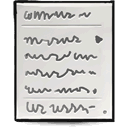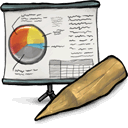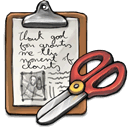
The special telechess contests are conducted by conveying the moves via telex (also teleprinter), radio (amateur radio), telegraph or telephone. Each player operates a chess clock to record his time. The player is not charged
with the time required for transmitting the moves. When applicable, the FIDE Rules of Play are valid in the matches. For transmission of the moves and the adjudication of the games, the ICCF Tournament Rules are valid when applicable. These contests are usually organized between teams of 6 to 10 players.
In 1976 a meeting took place between the Presidents of FIDE (Dr. Euwe) and ICCF (Hans-Werner von Massow) where it was agreed to start a Telechess Olympiad for country teams, which all had to include OTB and CC players.
| What is telex? |
| A global teleprinter network, called the Telex network, was established in the 1920s, and was used through most of the 20th century for business communications. The main difference from a standard teleprinter is that telex includes a switched routing network, originally based on pulse-telephone dialing. Telex is still in use for certain applications such as shipping, news, weather reporting and military command. Most of business applications have moved to the Internet though. |
|
National teams participated in three successive knockout tournaments, which were very enjoyable and enhanced co-operation between OTB and CC players and officials. They were discontinued in the early 1990's, mainly because of political re-alignments in Eastern Europe etc. and the emergence of other forms of new technologies, including the internet. The Telechess Olympiads were held in the KO-system, while teams consisted of 8 players. The pairing as well as colour distribution was determined by drawing of lots. In case of a draw, a very special board count was employed, favourizing teams winning more games on higher boards.
/ Based on notes by Alan P. Borwell /
 The special telechess contests are conducted by conveying the moves via telex (also teleprinter), radio (amateur radio), telegraph or telephone. Each player operates a chess clock to record his time. The player is not charged
with the time required for transmitting the moves. When applicable, the FIDE Rules of Play are valid in the matches. For transmission of the moves and the adjudication of the games, the ICCF Tournament Rules are valid when applicable. These contests are usually organized between teams of 6 to 10 players.
The special telechess contests are conducted by conveying the moves via telex (also teleprinter), radio (amateur radio), telegraph or telephone. Each player operates a chess clock to record his time. The player is not charged
with the time required for transmitting the moves. When applicable, the FIDE Rules of Play are valid in the matches. For transmission of the moves and the adjudication of the games, the ICCF Tournament Rules are valid when applicable. These contests are usually organized between teams of 6 to 10 players.


